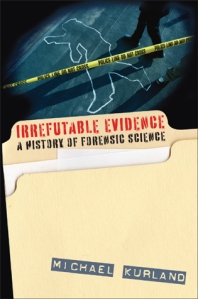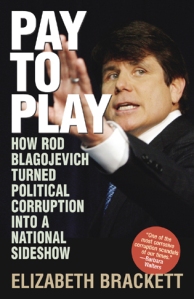The people behind Obama’s election
September 28, 2009
 Charles Madigan’s newest book, Destiny Calling: How the People Elected Barack Obama, is now available. Read the untold stories at the heart of Barack Obama being elected as president of the United States.
Charles Madigan’s newest book, Destiny Calling: How the People Elected Barack Obama, is now available. Read the untold stories at the heart of Barack Obama being elected as president of the United States.
Read more here.
Blagojevich in Context
September 25, 2009
Two themes emerged during former Illinois governor Rod Blagojevich’s heated exchange with an often-incredulous Jon Stewart on last night’s Daily Show (see below): the governor’s insistence that political—though not financial—quid pro quo is “the only way you get things done with cynical politicians” in Illinois, and his repeated declarations that his now-infamous remarks only seem incriminating because they are taken “out of context.”
Of course, Blagojevich is far from the first Illinois politician who, despite evidence to the contrary, refuses to think of himself as corrupt and insists that his actions are just “the way it’s done in Illinois,” as Elizabeth Brackett shows in PAY TO PLAY: How Rod Blagojevich Turned Political Corruption into a National Sideshow, her recently published and highly praised book on the Blagojevich affair. Brackett, an award-winning correspondent with PBS’s The NewsHour with Jim Lehrer who has covered Illinois politics for thirty years, draws on exclusive interviews with approximately thirty people close to the scandal to recreate the disgraced governor’s story and capture the man in all his contradictions: Blagojevich loved politics but disliked governing; promised to clean up his notoriously corrupt state but worked closely with the likes Tony Rezko and Stuart Levine; charmed voters and citizens but alienated his legislature and cabinet.
Blagojevich’s pugnacity and charm were both on full display last night, making this latest tour of his “national sideshow”—which, fittingly enough, is one with two purposes: to clear his name and sell his book—a potential P.R. coup for the governor. But for those who want Blagojevich’s tale in its entirety from an objective source, Brackett not only provides it; she provides it in full context—both that of his life and career and that of the corrupt political culture that enabled his rise and accelerated his downfall.
| The Daily Show With Jon Stewart | Mon – Thurs 11p / 10c | |||
| Exclusive – Rod Blagojevich Extended Interview Pt. 1 | ||||
|
||||
“Godfather of Neoconservatism” Dies
September 22, 2009
 As a New York Times article this weekend reported, “Irving Kristol, the political commentator who, as much as anyone, defined modern conservatism and helped revitalize the Republican Party in the late 1960s and early ’70s, setting the stage for the Reagan presidency and years of conservative dominance, died Friday in Arlington, Va. He was 89 and lived in Washington.”
As a New York Times article this weekend reported, “Irving Kristol, the political commentator who, as much as anyone, defined modern conservatism and helped revitalize the Republican Party in the late 1960s and early ’70s, setting the stage for the Reagan presidency and years of conservative dominance, died Friday in Arlington, Va. He was 89 and lived in Washington.”
Ivan R. Dee published a seminal book by Kristol, Neoconservatism.
Read more about Kristol in David Brooks’s New York Times article. Read more about the book Neoconservatism on our website: www.ivanrdee.com/Catalog/singlebook.shtml?command=Search&db=^DB/IRD/CATALOG.db&eqSKUdata=1566632285.
Higher Education in Crisis
September 17, 2009
One of the most cogent chapters in A BUBBLE IN TIME, William O’Neill’s new book on the “interwar years” (1989-2001), explores the decline of higher education in America. O’Neill raises a number of issues that haven’t been properly assessed in popular media:
- the precipitous fall in state funding of universities, causing rising tuitions;
- grade inflation, which waters down serious classroom work;
- various schemes to ensure diverse student bodies, most all at the cost of better-educated graduates (if they graduate at all);
- and the exploitation of faculty by universities who prefer to hire part-time and “adjunct” professors so as to avoid tenure and other benefits. The consequence of this last-named tactic is a generation of young Ph.D.s who must take part-time jobs at two institutions in order to survive, and who then work longer hours to earn meager salaries and have no time for research and writing.
The whole picture of academic life that O’Neill presents is cause for serious concern in a nation supposedly dedicated to upgrading the education of its citizens.
Shocking Revelations: The Importance of Forensic Science
September 16, 2009

Media’s Love Affair With Forensic Science
Michael Kurland’s new book, Irrefutable Evidence is a must have guide for crime narrative enthusiasts, true crime fans, and even for seasoned professionals. He outlines the history of forensic science and the current advancements it has made in the struggle for the improvement of criminal investigations. He points out that forensic science does not have an industry-only appeal; instead, it has become a national “spectator sport.” Even in the last fifteen years, when gritty crime novels and television shows were rabidly consumed by the general public, forensic science and its tie to the scientific method, was not the celebrity it has become today. The reasons for its popularity are two pronged. It is a media mainstay, acting as an instrument to deepen gruesome murder investigators in crime narratives. Outside of the world of fiction it acts as a security blanket for the innocent.
The terms “forensic science” and “criminology” are often substituted for each other in popular fiction, however, Kurland quickly corrects their important difference, “criminologists theorize about the root cause of crime and the effectiveness of punishment versus rehabilitation. Criminalists [forensic investigators] use scientific disciplines to analyze a crime scene and gather information for the purpose of apprehending and convicting a perpetrator, whatever his or her social or psychological background.” In other words, criminalists concentrate solely on the evidence at hand. The use of forensic science is also not a quick and easy solution to investigations, as television shows like CSI, NCIS, or Bones depict in a 42-minute episode.
The Helping Hand of Forensics
Despite the fact that forensic science technology is considered forward moving in the realm of criminal justices, it also has a large stake in the past. Achievements in forensics have led to the investigation of previous convictions. Advancements in DNA testing assisted in proving that thirteen prisoners on Illinois’s death row were in fact innocent. This striking fact, noted Kurland, prompted then Governor George Ryan, a long time supporter of capital punishment, to declare that the [Illinois] death penalty system was “fraught with errors” and this placed a moratorium on executions in 2002.
Slipping Through the Cracks of Procedure: The Execution of Cameron Todd Willingham
Kurland’s work on the clash between forensic science and previous arson investigators sheds additional light on faulty convictions, including the recent spotlight case of Cameron Todd Willingham, who was convicted of arson and the subsequent murder of his three young children in Texas more than a decade ago. He examines the history of arson investigation, also offering a concise explanation of common motives for arson. Until recently, arson investigators relied on myths about fire, as well as previous cases, to address fires. These myths, debunked by forensic science testing, were used as an aid in testimony against people being tried for arson. Considered expert testimony, these false ideas about arson and the basics of fire science have led to numerous arson and murder convictions. Some of these convictions, including cases resulting in a death sentence, were later found to be incorrect. While some wrongly convicted people were exonerated because of these new findings, many died innocent of their alleged crimes.
In the case of Cameron Todd Willingham, a struggling working-class husband and father in Corsicana, Texas, he could not afford his own attorney during his murder trial. David Grann, in a recent article for the New Yorker, writes that for Willingham, the odds were stacked against him. With the aid of Elizabeth Gilbert, the highly acclaimed forensic fire investigator, Dr. Gerald Hurst, was contacted regarding Willingham’s case. Hurst, Grann writes, found that the arson investigators involved in Willingham’s case based their findings strictly on “old wives’ tales.” Hurst’s report noted that there was no evidence arson was committed, and that Willingham was about to be executed due to “junk science.” Willingham’s case, although declared innocent with Hurst’s forensic findings, did not have a Hollywood happy ending. His petition, including the new scientific findings, was unanimously denied by the Board of Pardons and Paroles and he was executed via lethal injection on February 17, 2004—ten years after he suffered the loss of his one year-old twin daughters and their big sister, two-year old Amber in that fateful 1994 fire.
Willingham’s Fate is One of Many
Willingham’s wrongful conviction is not an anomaly. Kurland provides multiple additional cases, including examples ending in overturned convictions. One chilling case involves Rose Kate Roseborough of Ashland, Ohio who was convicted and sentenced to life without parole in 2003 for the house fire murder of her twin daughters. It was only in 2009 that appeal was granted based on forensic evidence and she received a new trial.
While Kurland highlights that forensic science is constantly evolving, the criminal justice system is not moving at a parallel pace. It is only until new textbooks educate a new wave in the justice system that the irrefutable evidence of forensic science becomes an inherent tool in all cases.
